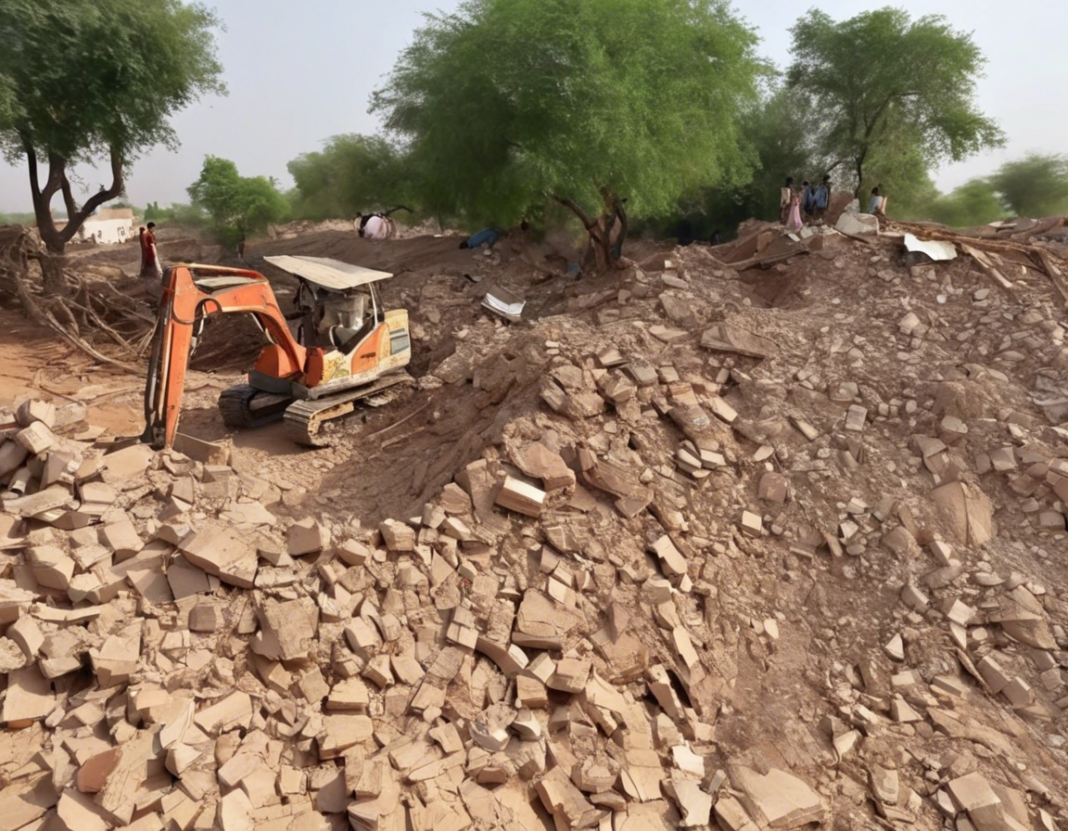Introduction
The recent land collapse incident in Rajasthan has once again brought to light the potential hazards associated with unstable soil and geological factors. Land collapse, also known as land subsidence, can have disastrous consequences on both the environment and communities living in affected areas. In this article, we will delve deeper into the causes of land collapse, its impacts on the surroundings, and potential mitigation measures.
Understanding Land Collapse
Land collapse can be defined as the gradual sinking or caving in of the Earth’s surface due to various underlying factors. While it can occur naturally in some cases, human activities such as mining, groundwater extraction, and construction can significantly exacerbate the phenomenon. The state of Rajasthan, known for its arid landscapes and vast stretches of land, is particularly susceptible to land collapse due to its geological composition and human interventions.
Causes of Land Collapse
-
Geological Factors: The presence of soft, easily compressible sediments underground can lead to land collapse. In Rajasthan, geological structures like alluvial plains and limestone formations can contribute to unstable ground conditions.
-
Groundwater Extraction: Excessive pumping of groundwater for agricultural or industrial purposes can result in the compaction of underground layers, leading to land subsidence. As a water-stressed region, Rajasthan faces the risk of land collapse due to extensive groundwater extraction.
-
Mining Activities: Mining operations, especially those involving practices like underground coal mining or extraction of minerals, can weaken the structural integrity of the land, causing it to collapse over time. Rajasthan’s mining activities, particularly in regions like Jodhpur and Alwar, have been linked to land subsidence incidents.
-
Improper Land Use: Deforestation, urbanization, and construction activities can alter the natural landscape, disrupting the equilibrium of the land. Improper land use practices can accelerate soil erosion and destabilize the ground, leading to potential collapse events.
Impacts of Land Collapse
-
Infrastructure Damage: Land collapse can damage roads, buildings, and other structures built on the affected land. The sinking or shifting of the ground can compromise the stability of infrastructure, posing risks to human safety.
-
Environmental Degradation: Land collapse can disrupt ecosystems and natural habitats, leading to loss of biodiversity. In Rajasthan, a region abundant in flora and fauna, land collapse can have detrimental effects on the environment.
-
Water Contamination: As land collapses, underground aquifers and water bodies can get contaminated due to the mixing of different layers of soil and pollutants. This can have severe repercussions on water quality and availability in the area.
-
Economic Losses: The economic impact of land collapse can be significant, affecting industries, agriculture, and livelihoods dependent on the stability of the land. Rehabilitation and restoration efforts post-incident can also incur substantial costs.
Mitigation Measures
-
Groundwater Management: Implementing strict regulations on groundwater extraction and promoting sustainable water use practices can help prevent land collapse due to aquifer depletion.
-
Land Use Planning: Proper land use planning strategies, including zoning regulations and environmental impact assessments, can help prevent haphazard development that may exacerbate land collapse risks.
-
Geotechnical Studies: Conducting thorough geotechnical studies before embarking on any construction or mining activities can provide valuable insights into the ground conditions and potential risks of land collapse.
-
Monitoring Systems: Installing monitoring systems like tilt sensors, GPS surveys, and satellite imagery can help track land movement and detect early warning signs of potential collapse events.
Frequently Asked Questions (FAQs)
- What is the difference between land collapse and land subsidence?
-
Land collapse typically refers to a more sudden and dramatic sinking of the land surface, while land subsidence is a gradual and prolonged sinking over time.
-
Can land collapse be predicted accurately?
-
While it is challenging to predict land collapse with absolute certainty, monitoring systems and geological surveys can provide valuable insights into potential risks.
-
Are there warning signs of impending land collapse?
-
Common warning signs include cracks in the ground, sinking or tilting structures, and changes in the landscape’s topography.
-
How can communities prepare for land collapse incidents?
-
Communities can prepare by creating emergency response plans, raising awareness about the risks, and collaborating with authorities for timely intervention.
-
Is land collapse a reversible phenomenon?
- Reversing land collapse is a complex process that often involves extensive restoration efforts, geotechnical interventions, and sustainable land management practices.
In conclusion, understanding the causes and impacts of land collapse is crucial for developing proactive strategies to mitigate risks and protect vulnerable regions like Rajasthan from potential disasters. By promoting sustainable land use practices, investing in preventive measures, and fostering community resilience, we can work towards safeguarding our environment and communities from the adverse effects of land collapse.

